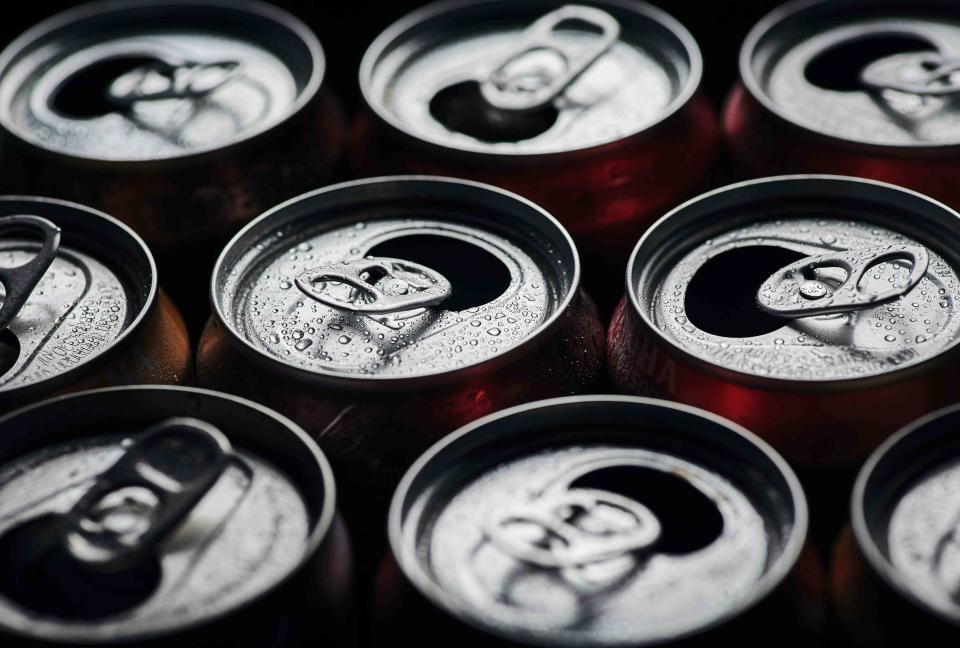Here’s the Real Reason Beer Comes in Aluminum Cans
Despite beer existing for thousands of years, the iconic beer can is a relatively recent development. Here's why it's ideal.

Krit of Studio OMG / Getty Images
Given that beer has existed in some form for thousands of years, it’s incredible to note that canned beer has only been a thing since 1935. That’s the year the Gottfried Krueger Brewery of Newark, New Jersey first offered beer and ale in cans.
Before that, beer was available in kegs, barrels, bottles, and transport containers called growlers. Packaging beer in cans was revolutionary and changed how consumers thought about and consumed beer.
Of course, bottles didn’t immediately disappear. For a long time, during the post-Prohibition years in America, glass containers were king. Those bottles came in all shapes, sizes and colors. Cans largely came in one size – 12 ounces – and even as the technology improved and aluminum became the standard material, there was a feeling among beer drinkers that cans were a lesser vessel when compared to glass.
That began to change as small, or “craft,” breweries grew in the United States. While some craft brands dabbled in cans early on, credit can be given to Colorado-based Oskar Blues Brewery, which went all in on canning in the early 2000s and made the packaging a centerpiece of its sales and marketing.
"Off-flavors come in many different forms when it comes to beer. The most obvious one that beer drinkers encounter is “lightstruck,” which presents as a skunk-like aroma in beer."
In due course, other craft brewers would follow, completely shunning bottles, and flipping the long-established script on beer packaging.
Why cans?
There are a few convincing arguments that have been made by brewers on why the obvious choice for beers are cans. The first has to do with preventing off-flavors.
Off-flavors come in many different forms when it comes to beer. The most obvious one that beer drinkers encounter is “lightstruck,” which presents as a skunk-like aroma in beer. When the blue UV ray of the sun’s light strikes a beer, it negatively reacts to the alpha acid compounds in hops, turning it into that skunk aroma.
Related: The 25 Most Important American Craft Beers Ever Brewed
For bottled beer, this is common. The lighter the color of the glass, the more likely a beer is to be skunked when in the sunlight. Clear glass offers no protection. Green glass offers some, but not much, and brown glass offers the most coverage for what is commercially and feasibly available in the color options. Cans do not allow light to penetrate the beer, removing the chance for lightstrike to occur before the beer is opened.
Another common off-flavor results from oxidation. This is when oxygen seeps into a finished beer and the result is akin to the smell of wet cardboard. For bottled beers, which are topped with a cap, oxygen can penetrate the seal between the bottle lip and the cap over time, allowing the beer to become oxidized. This is not an issue with cans, so long as it has been properly filled and sealed airtight.
"Empty cans are lighter than empty bottles, making them easier to ship with fewer emissions. Cans are also more likely to be recycled over glass bottles."
Most brewers agree that another advantage to cans is their environmental impact. Empty cans are lighter than empty bottles, making them easier to ship with fewer emissions. Cans are also more likely to be recycled over glass bottles.
Sizing flexibility
The 12-ounce can size is still a wildly popular option for six packs, but as the number of breweries has grown in the U.S., many have adopted a 16-ounce size for four packs.
A 19.2 ounce can size has also become increasingly popular in sports stadiums and large events, as well as at convenience stores, where customers are likely to just buy one beer at a time. Given the size, brewers are prone to putting higher alcohol-by-volume beers into the packaging.
On the other end, are four- and eight-ounce cans, sometimes called stubbies, can offer a sample-sized taste of a beer. These are also popular with high ABV beers, especially richer styles like barrel-aged barleywine.
Related: How Quickly Do Hoppy Beers Go Bad? We Did a Taste Test to Find Out
An artistic canvas and design advantages
The circumference of a can means that brewers have gotten creative with their label art, often using the available can real estate to showcase artwork, branding, and detailed information about the beer inside. The flashier the can, the more likely it is to be featured on a drinker’s social media.
Some beers have also been going beyond the standard silver aluminum can tops and using gold or black colors. Tabs on the can are also able to beb die-cut with various designs for extra aesthetic touches. Other brewers have been putting their beer into bottle-shaped aluminum cans, complete with screw-off tops. There are even some cans available where the whole lid can be peeled off, creating a cup-like experience.
One of the biggest design advantages of cans is that they are pool and beach-friendly and can be easily transported without worrying about broken glass. Cans are great for hikes and camping, especially when carrying out empties. Once seen as less than ideal for beer, there is a reason the aluminum cylinders are the preferred option today.
For more Food & Wine news, make sure to sign up for our newsletter!
Read the original article on Food & Wine.

 Yahoo Lifestyle
Yahoo Lifestyle 
